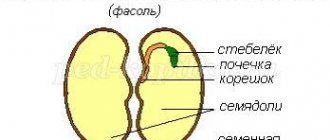Types and characteristics of mosaics
Mosaic from Lat. “Musium” means “dedicated to the muses” - this is a drawing made up of small pieces or various materials.2. Smalt mosaic is the same glass mosaic, but with the addition of potassium salts. Smalta is one of the relatives of Murano glass: just as bright, but much stronger and completely opaque. To produce smalt mosaics, glass is ground into powder and “baked” a second time with special dyes. Each piece of smalt has its own color and tone, as well as a gloss or matte surface. An artist or designer puts these small plates into picturesque chords, which then create a pattern or ornament, a painting.
"Golden mosaic" It is manufactured using a completely handicraft method using ancient technology. Production begins with the traditional blowing of vessels from very thin transparent glass (0.2 - 1 mm thick). The large “bubble” obtained in this way is called soffione. This glass is cut into squares measuring approximately 10 x 10 cm. Such gold mosaic plates are called “cartelline”.
A metal sheet of yellow or white gold is laid on a thin plate of gold mosaic “cartellina”. A sheet is a thin foil obtained by beating metal by hand. For example, from 20 gr. gold yields 6 square meters of foil.
A hot mass of thicker glass is poured onto a thin plate with foil. In this way, both glass layers are tightly connected and form a golden “pancake”. After this, the golden “pancakes” are sent to a kiln for hardening. A thin glass can be colored, a thick plate of gold mosaic can be green and blue, or transparent (crystal base).
The surface of the gold mosaic can be smooth or corrugated. The pancake is cut with a special glass cutting tool made of very hard hardened steel. Cutting gold mosaic into tesseras, writes Infobud, is done by hand.
3 . Ceramic mosaic is externally similar to ceramic tiles, but with much smaller dimensions, while the surface can be glazed, embossed, with additional inclusions. It is stronger than glass mosaic and is suitable for covering a wide variety of surfaces.
4. Stone mosaic - in the production of such mosaics, a variety of types of stone are used, starting with cheap tuff and ending with the rarest types of marble, onyx and jasper. oh, the stone can be polished, or vice versa. The shape of the particles is to taste.
Marble mosaic. If you buy mosaics from natural or agglomerated marble, you should keep in mind that these are relatively soft materials, when caring for which you cannot use abrasives external cleaning agents and hard brushes that can leave scratches on the polished surface. It is necessary to avoid contact with acid-containing liquids on their surfaces - fruit juices, wine, vinegar, etc. Most products made from these materials are recommended after installation in places with intensive use of the floor. with special wax. The exception is quartz-based agglomerates.
5. Non-traditional materials. There are both precious materials and universally respected porcelain tiles. Porcelain stoneware is stronger than just ceramics, and much cheaper. It is important to follow the correct manufacturing technology, otherwise the porcelain stoneware begins to delaminate and lose color. Metal mosaic - stamped metal caps 4 mm high from a half-millimeter stainless steel sheet, fixed on a patented rubber backing, which Raya gives the tile the necessary degree of rigidity. The surface of the steel is made polished, matte, with notches of various types and, finally, covered with a thin layer of brass or bronze. This material is quite expensive, but it makes an excellent decor.
Of course, the most expensive materials used in mosaics are gold and platinum. There are series in which the mosaic is made by hand from start to finish, placing real 99-carat gold foil between two layers of glass. Most often, gold mosaic is used individually, making inserts. Similar products are offered for both walls and floors; the inclusions look especially beautiful at the bottom of the pool.
Presentation of porcelain stoneware and ceramic tiles. Lagunova Daria 484g.
Types of Ceramic Tiles • Floor tiles are usually made from ceramic or natural stone. Ceramic tiles can be glazed or unglazed. Mosaics are laid out using various methods. Floor tiles are usually laid on an adhesive consisting of sand, cement and sometimes a latex additive for additional strength. Intertile joints (gaps between tiles) are usually filled with special compounds - grouts. Natural stone tiles can be especially beautiful. However, since it is a natural product they are less uniform and require more planning in terms of use and installation. Stone tiles, like granite, can be sawn on both sides and then polished on the top side to produce tiles of uniform thickness. Some polished natural stone tiles become slippery when wet, like granite and marble. Stone tiles with a rough or untreated surface have less slip. Ceramic tiles for use in wet areas are less slippery, or very small tiles are used so that the grout acts as an anti-slip line. Stone floor tiles tend to be heavier than ceramic tiles and are somewhat more susceptible to breakage during transportation due to their lower strength. It should be noted that the correct name for glazed tiles is glazed ceramic tiles[2]. Accordingly, unglazed - not covered with glaze. Ceramic tiles (tiles) are often used in public places, including clinics, hospitals and others. There is also a type of ceramic tile - ceramic granite (porcelain stoneware). This material, unlike ceramic tiles, is suitable for outdoor use. This feature is due to the fact that ceramic granite is made with the addition of granite chips and fired at a temperature of more than 2000 degrees. This results in a more dense material with water absorption of less than 0.3% (for ceramic tiles ~3%). Also, porcelain stoneware is less susceptible to abrasion, which is why it is often used when tiling public spaces. The only inconvenience when working with ceramic granite is processing (cutting) the tiles. Although this drawback is easily eliminated with the help of modern tools. In turn, porcelain stoneware is divided into three main groups: polished, unpolished, lappated (semi-polished).
Kinds
Mosaic is one of the types of pictorial art, where the display of a plot or ornament is made of the same type, very tightly fitted to each other, particles of different colors (pebbles and glass, ceramics and wood can act as mosaic pieces).
The most common techniques for making mosaics on wood, distinguished by a huge selection of shading and design solutions, are inlay, intarsia, marquetry techniques, and block mosaics.
Inlay
This is a stylish decoration of products or any surfaces by inserting drawings or ornaments from special plates into their surfaces. Such plates are made from expensive materials (for example, mother of pearl or ivory). There are 2 main methods of modern inlay.
The first of them is used for inserting large parameters and not the most complex configuration. The required insert is prepared, the place in which it will be inserted is selected, and then its shape is reflected by the contour using a sharp object along the base.
The second method is chosen when creating a complex ornament with an openwork image. On the surface that will be decorated, you need to apply an insert pattern, and make a not very deep cut along the existing contour. After this, the tool selects a recess with a slightly beveled edge. When the inserts coincide with the recesses, the master adjusts them on the back side. For the best fixation, a notch will be made to the base. The inserts are strengthened in specially prepared recesses with an adhesive substance, followed by trimming the resulting pattern.
Intarsia
This type of wood-on-wood mosaic is similar to inlay: wooden plates that differ from the base in color or texture are inserted into the recesses of the wood base. The decorative design is strengthened on the base using glue or mastic. The front side of the plates of this set can be made of cypress, yew, boxwood and other resistant species. It is carefully smoothed and polished with high quality.
Block mosaic
It is considered one of the most common types of mosaic on wood, which differs from other techniques in that it requires less labor, which can explain its widespread use in our time. The technique of such a mosaic is that blocks will be glued together from different bars or plates according to the existing pattern. Then these blocks are cut crosswise into a large number of plates with the same pattern. The plates can be inserted into a recess in the background or glued to the surface: this is how an original pattern is formed - mosaic tiles.
Bars 20 cm long and 2x2 cm in cross section made of exotic wood are usually glued into the block. The mosaic pattern will be created by the end surface of those bars that are included in the block. After gluing, the block will be cut parallel to the end surface into thinner plates, which can be inserted into the recesses of the base or glued to the base. This creates a repeating image on the surface. After these manipulations, the resulting surface is carefully sanded and coated with transparent varnish. Based on the mosaic pattern developed by the decorator, the required number of blocks with different patterns of the end surface will be made. From these plates the “mosaic panel” will then be assembled.





